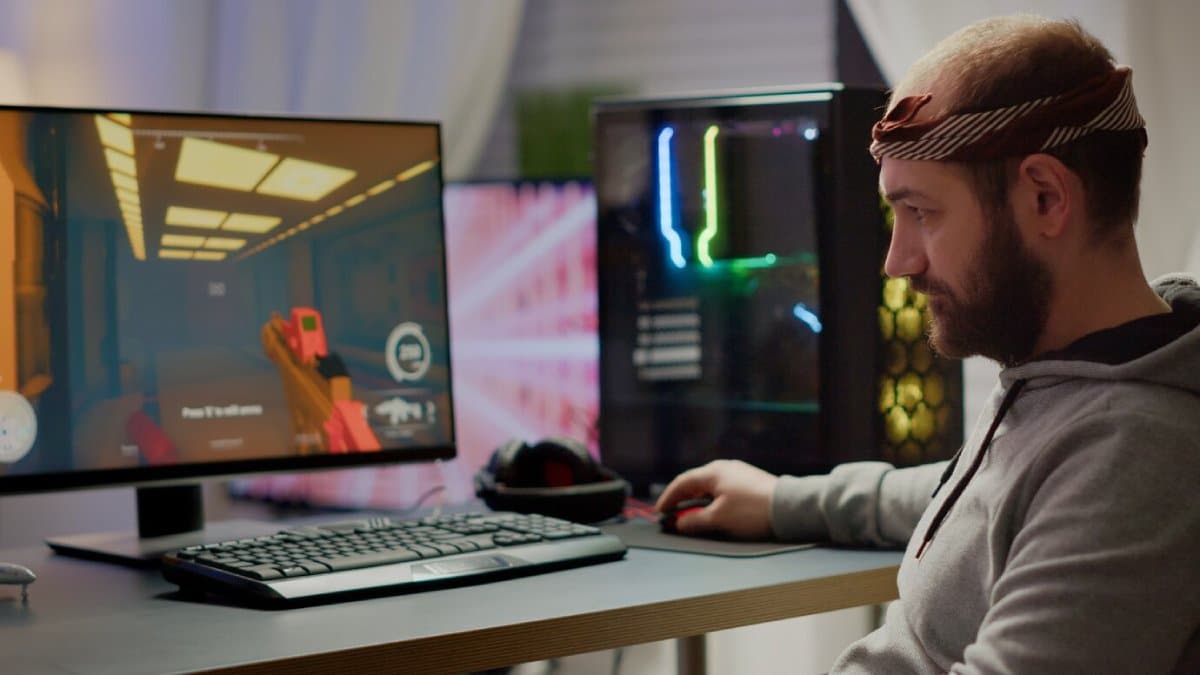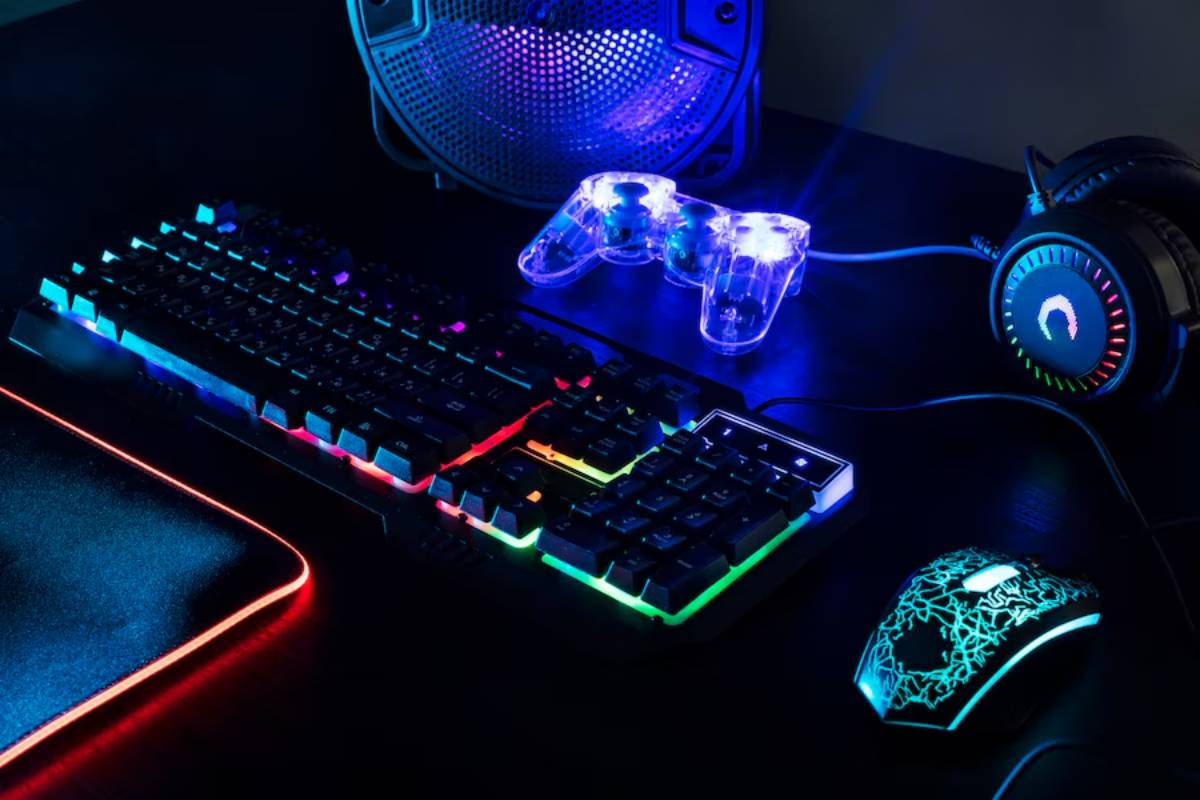
The Ultimate Guide to Setting Up the Ideal Sensitivity & DPI for FPS Games
In first-person shooter (FPS) games, precision and control are key. They can decide if you win or lose. Whether you’re a pro gamer or a beginner in FPS games, knowing how to set your sensitivity and DPI is key. As games become more competitive and eSports grow, adjusting your sensitivity settings can help you beat your opponents. This guide, updated in October 2023, explains FPS sensitivity settings, DPI setup, and how to control FPS effectively. You’ll gain the knowledge to enhance your gaming experience.
Your mouse settings—DPI and in-game sensitivity—are the heartbeat of your game. They connect your physical movements to your on-screen actions, orchestrating your performance. These settings help you aim accurately, track enemies easily, and control recoil like a pro. For competitive FPS gamers, mastering these adjustments is key. It can mean the difference between winning and losing.
Pro Tip: Once you find a setup that works, stick with it. Changing settings frequently resets muscle memory and can hinder progress.
Important: Drastic changes can disrupt your flow. If something feels off, make minimal adjustments.

Quick Guide
To set up the ideal sensitivity and DPI for FPS games, follow this comprehensive guide:
- Determine Your Play Style: Are you a sniper who needs precise aim, or a run-and-gun player who values speed? Your play style will influence your sensitivity settings. Players who focus on precision usually prefer lower sensitivities. In contrast, aggressive players tend to choose higher sensitivities.
- Try DPI Settings: Begin with a moderate DPI of 800 to 1600. Then, change it as needed for your comfort and accuracy. Many pro players prefer lower DPI settings (400-800) for better precision, while casual gamers often choose higher DPI for smoother movement.
- Adjust In-Game Sensitivity: Use the game’s settings to fine-tune your sensitivity. A lower sensitivity can improve accuracy but may require more mouse movement. Try to find a balance that allows both comfort and precise aiming.
- Test in Different Scenarios: Try your settings in different game environments. This helps you see how they perform in various conditions. Try sniping, close-quarters combat, and tracking fast-moving enemies.
- Use a Mousepad: A quality mousepad provides the right friction and space, helping your mouse move smoothly. Larger mousepads work best for low-sensitivity setups, giving you plenty of space to move your hand freely.
- Practice Regularly: Keep practising your settings. This will help you get better over time. Don’t switch settings too often—give yourself time to adjust and build muscle memory.
Understanding the Core
Before we get into sensitivity and DPI, let’s clarify what they are and how they affect your gameplay.
What is DPI?
DPI (Dots Per Inch) shows how your cursor moves on the screen compared to your mouse’s movement. For example, with a DPI of 800, moving your mouse one inch will move the cursor 800 pixels. DPI is hardware-based and often set using your mouse’s software. A lower DPI gives you more precise control, while a higher DPI makes cursor movement quicker.

What is Sensitivity?
Sensitivity refers to the in-game multiplier applied to your DPI. It’s set within each game and determines how fast your in-game camera or aim turns. Sensitivity is typically adjusted to complement your DPI setting. The combination of DPI and sensitivity is often called “eDPI” (Effective Dots Per Inch).
The Importance of Sensitivity and DPI in FPS Games
In FPS games, precision is key. Getting the right sensitivity and DPI settings can boost your accuracy and speed. This applies whether you’re setting up a headshot in “Call of Duty” or aiming far away in “Counter-Strike.” Pro gamers spend hours adjusting settings to fit their style. This helps them react quickly and accurately in challenging situations.
Many top pros use a DPI setting of 400 to 800 and combine this with low in-game sensitivity. This setup gives better control over movements and helps snipers aim with great accuracy, especially during long-range engagements.
Step-by-Step Guide (How to Practise)
- Begin with a Baseline: Use default settings or check what pro players use as a starting point. Many FPS games also have recommended presets.
- Adjust DPI First: Find a DPI setting that feels natural. Most gamers settle between 400 and 1600 DPI. Avoid changing DPI frequently to maintain consistency.
- Adjust Sensitivity: Change sensitivity settings slowly, in small steps (like 0.1 each time). Use training modes or aim trainers like Aim Lab or Kovaak’s to test your performance.
- Monitor Performance: Track your accuracy, kill/death ratio, and comfort level. Some aim trainers and games offer detailed analytics to help you evaluate effectiveness.
- Make Incremental Changes: Avoid significant changes that can reduce your muscle memory. Tweak one variable at a time—either DPI or in-game sensitivity.
- Seek Feedback: Record gameplay or play with friends who can offer insights. Watching replays can highlight inconsistencies in your aim or movement.
Best Practices & Additional Insights
- Customise for Each Game: Different games handle sensitivity differently—change settings for each title. Use in-game sensitivity converters if you switch often.
- Consider Your Hardware: Mice with high polling rates (1000Hz or more) offer smoother tracking. A consistent polling rate improves performance.
- Watch the Pros: Look at professional gameplay. Check sites like ProSettings.net to see top players’ DPI and sensitivity settings.
- Stay Updated: Patches and game engine updates may affect sensitivity. Reassess your settings after major game updates.
- Arm vs. Wrist Aim: Decide if you use more arm movement (better for low sensitivity) or wrist movement (common for high sensitivity). This can influence your mousepad size and desk setup.
FAQs
Q: What is the best DPI for FPS games?
A: While it varies by player, a DPI between 400 and 1600 is generally recommended. Many pros use 400-800 for more precise control.
Q: How do I find the right sensitivity setting?
A: Experiment with minor adjustments and test in practice modes. Stick with a setting long enough to build muscle memory.
Q: Can I use the same settings for all games?
A: Not always. Sensitivity can feel different across games. Use sensitivity calculators to convert settings between titles for consistency.
Q: What is eDPI, and why is it important?
A: eDPI (effective DPI) = DPI × in-game sensitivity. It’s a standardised metric that helps compare setups across users and games.
Q: Should I change sensitivity based on my role (sniper vs. entry fragger)?
A: Some players create multiple profiles based on their in-game role. Snipers may benefit from lower sensitivity, while entry fraggers prefer quicker movements.
Conclusion: The Ultimate Guide to Setting Up the Ideal Sensitivity & DPI for FPS Games
Finding the right sensitivity and DPI for FPS games takes time and practice. It’s a personal journey that needs patience and some trial and error. Follow the tips in this article to boost your accuracy and control. Remember, finding what works best for you and your play style is key. The more consistent your setup is, the stronger your muscle memory and reflexes will be.
Now it’s your turn! Try these tips, track your results, and adjust your setup. Keep going until you hit that sweet spot. Don’t forget to share your setup with fellow gamers and help others. Happy fragging!


